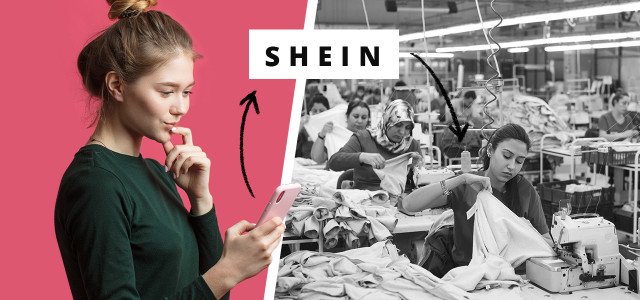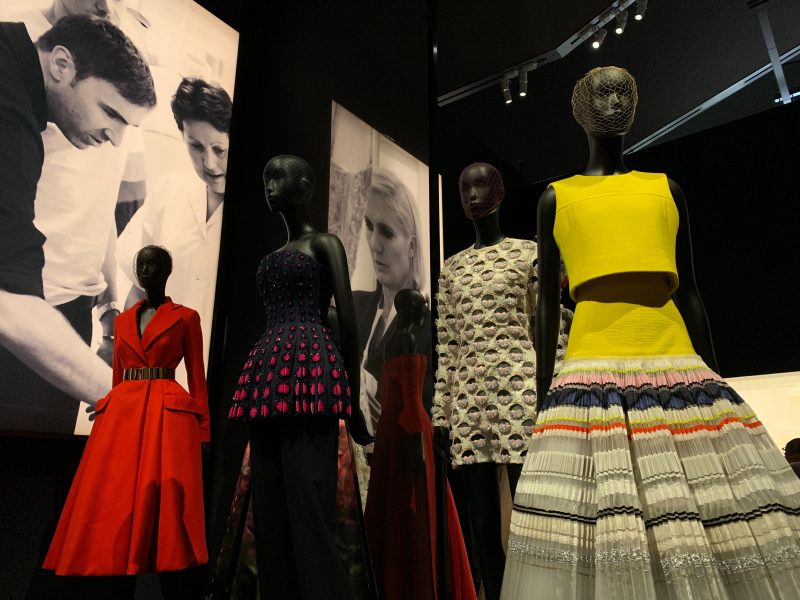Shein: The darkest side of fashion – and how to protect teenagers from fast fashion
The fashion brand Shein is incredibly popular with the target group of 15 to 25 year old, the fashion from the fashion giant from China is extremely stylish – and outrageously cheap. The company’s success has fatal consequences for the environment. We explain what’s behind the brand and how dangerous the hype surrounding ultra-fast fashion is. For this, Shein online shopping platform helps parents about fashion.
Whoever buys from Shein is not looking for the hoodie for life, but for a cool piece that will be replaced with a new cool piece at the next opportunity. The cheap prices suggest it: The quality at Shein is low, after all most products are thrown away after a short time – disposable fashion.
Who is Shein?
Shein online shopping platform. To understand why Shein is increasingly disrupting the fashion world and negatively impacting our environment, here are some facts about the company:
- Little is known about the company, which is based in the Chinese city of Guangzhou. If you look for information about the group on the website, you will hardly find anything there.
- Shein was valued at $30 billion in mid-2021 and its revenue at $10 billion (2020) (source: Bloomberg).
- Shein primarily produces for the international market; the brand is less well known in China itself.
- Shopping at Shein is only possible online and via app – there are no Shein stores.
Unnoticed by many, Shein has become one of the big players in the fashion market: The website is one of the most visited fashion sites worldwide. In the middle of last year, the Shein app overtook the most downloaded Amazon shopping app in the USA to date. In Germany, Shein is now the 5th largest online specialist in the fashion sector.
The popularity is also reflected in social media: the hashtag #shein # shein online store has around 18 billion views on TikTok. Shein is also active on Instagram, where the company has over 20 million followers.
Why is the company so successful – when it is so heavily criticized?
We are not the first to criticize Shein: Criticism rains down from all sides, online ratings are bad, consumer advocates warn against Shein as a fake shop, environmentalists generally advise against fast fashion. That doesn’t seem to affect the fashion group – and its buyers.
While many of us would never shop at Shein, youngsters find the brand irresistible. The selection is gigantic (a good 260,000 products, as of May 2022), there is practically nothing that does not exist. And in all colors. There is little risk that your best friend will suddenly have the same shirt. And since Shein Germany has been offering free returns, Shein has offered many young people what is virtually the perfect online shopping experience. Shein reviews are also good.
Beware of manipulation of children
However, the parent guide “Look!” warns against the manipulation of children by the Shein shopping app. Young people are to be turned into loyal customers with rewards. The guide says: “In addition to vouchers and discount codes, children and young people will come across so-called ‘dark patterns’ in the app. These are mechanisms that encourage users to make excessive purchases and bind them to the app.”
Shein is always running a discount campaign and anyone who opens the app every day gets points for it. The more the better, then shopping will be even cheaper. It’s not for nothing that Shein is called the “TikTok of e-commerce”
Shein is also omnipresent on social media. According to Look! Shein was the top-mentioned brand in sponsored posts on both TikTok and YouTube in 2020. Influencers like Bibi (Bibisbeautypalace) or Abigail (ex-GNTM candidate) advertise for the company (keyword influencer: inside marketing) or have their own collection there.
“It’s almost impossible for young users to escape the online presence of ultra-fast fashion companies like SHEIN.”
What to do about ultra-fast fashion like Shein?
If you want to explain to your offspring why shopping at fast or ultra-fast fashion labels (we explain the difference below in the text) is an absolute no-go, it is not uncommon for them to fall on deaf ears. If fashion is so cool and available for little pocket money, why not buy it? “Mom, chill, the t-shirts have already been produced!”
Here are a few tips and arguments on how you can motivate your child, your girlfriend or yourself to change their consumer behavior:
- Fair fashion has long been just as trendy as fast fashion. Here you will find the most important brands and the best shops for fair fashion.
- Even fair fashion does not always have to be expensive: Here you will find all current sales for fair & green fashion.
- With every purchase, ask yourself if you really need the item of clothing.
- Inform others about the problems fast fashion is responsible for (e.g. also by sharing information about the topic on social media).
- Go shopping with your child in real stores and shop online less.
Explain the mechanics of Shein and similar companies to your child. Many children and young people are more persuaded by facts in the form of numbers or by films and books on the subject than by pointing fingers.
- Around 2,700 liters of water are needed for a single T-shirt made from conventional cotton, and around 8,000 liters of water are needed for a pair of jeans.
- Around 10% of industrial water consumption is used for the production of clothing.
- According to a study by Barclays Bank, the fashion industry is responsible for eight percent of global greenhouse gas emissions. If development continues at this pace, the proportion could increase to 25 percent by 2050.
- Textiles made of synthetic fibers release microplastics when washed in the washing machine, which then end up in the environment. “A single fleece jacket can release up to a million fibers per wash, while a pair of nylon socks can still release 136,000. According to an EU study, Europe’s washing machines alone flush 30,000 tons of synthetic fibers down the drain every year.” Explains Greenpeace in a factsheet on sustainable clothing.
- Well-known influencers don’t advertise for Shein because they think the fashion is so great – but because it’s their job. For each purchase, they receive a commission of 10 to 20 percent.
What is fast fashion or ultra fast fashion?
In the last 20 years, global textile production has more than doubled, according to Greenpeace, around 100 billion pieces of clothing are sold every year. And these are being worn less and less.
Fast fashion means bringing a large number of collections onto the market in a very short time and in large quantities – and that at low prices, cheaply and often produced under poor conditions in textile factories in Asia. Fast fashion promotes the throwaway economy, it is criticized for ecological, social and economic reasons.
The increase of fast fashion is ultra fast fashion. Here, high-speed production makes well-known fashion brands like H&M or Zara look old. Garments that have not yet been produced can be seen on social networks. Depending on the likes and comments, the companies can see what is well received – and how much needs to be produced. The parts are manufactured in just one to four weeks, almost in real time.
It is true that – so that the goods reach the customer faster – production is increasingly taking place in Europe, but also in the low-wage sector. Last year it became public under what conditions the seamstresses (mostly migrants from Asia) have to work in Leicester, England: at an hourly wage of four euros, not even half the British minimum wage.
Conclusion
In order to produce fashion in the most environmentally friendly and socially responsible way possible, companies have to take real responsibility – and this also requires political and legal framework conditions. Rules such as the German supply chain law are only a weak start here. We can visit www shien com online shopping
At the same time, it is also important that we use our power as consumers and change all of our consumer behavior. When it comes to clothing, it’s not nearly as difficult as you might think.
Also Read: Danielle Rose Russell weight loss


